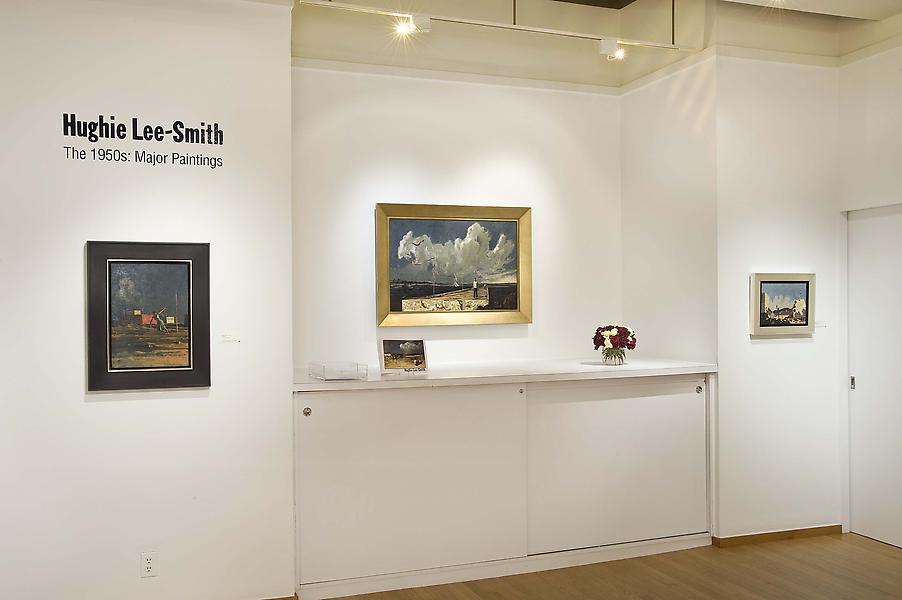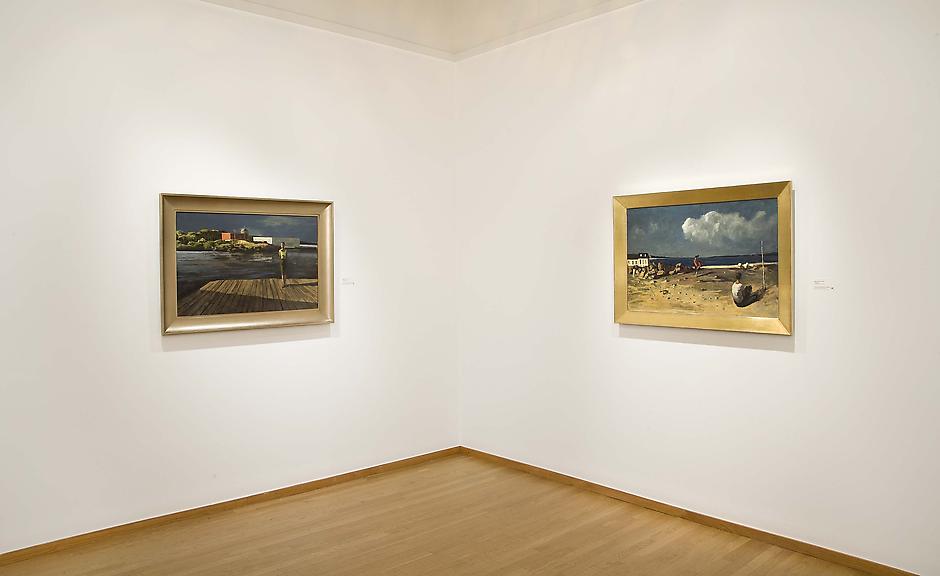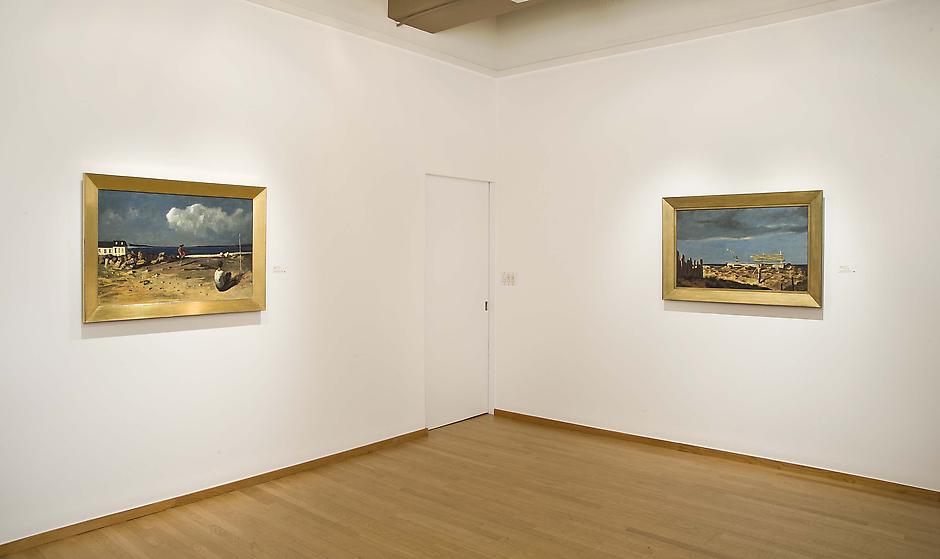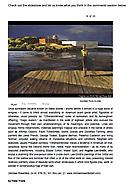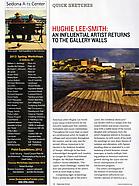(New York—October 19, 2011) Michael Rosenfeld Gallery is pleased to present Hughie Lee-Smith: The 1950s, Major Paintings, on view from November 5 to December 23, 2011. Comprising eight oil-on-Masonite paintings from a pivotal decade in the artist’s career, this is the gallery’s first solo exhibition of Lee-Smith’s work (although he has been featured in numerous group shows). Hughie Lee-Smith arrived at his mature style in the early 1950s, when he moved away from the social realism of the WPA era and towards an art that remained social realist in its commitment to social justice but a signature style that blended Lee-Smith’s longtime interest in European masterworks with aspects of surrealism. The works in this exhibition encapsulate the visual motifs and thematic concerns that he would rework and ponder throughout his career: questions of alienation, isolation, and urban decay; dream-like landscapes populated by solitary figures who remain alone even when in the company of others; whimsical elements juxtaposed in a surrealist manner with crumbling architecture or deserted beaches; and tempestuous, sublime skies—metaphors for the unconscious and a reminder of how powerfully Lee-Smith’s Midwestern surroundings influenced his vision.
Immediately recognizable for their beautifully haunting, sparsely populated landscapes, Lee-Smith’s paintings trouble conceptual binaries—between internal and external, real and surreal, black and white, isolation and community, hope and despair—and defy categorization. The dream-like atmosphere and pervasive sense of alienation in these works inevitably elicit comparisons to Giorgio de Chirico, Edward Hopper, and Eugene Berman, but such corollaries are only half right. While these artists share many of Lee-Smith’s existential concerns, the figures in their work are predominantly white, reinforcing a Western tendency to imagine whiteness as the “universal” or un-raced identity. At a time when white artists were thought of simply as “artists” while African American artists were expected to paint/sculpt/draw “the black experience,” Lee-Smith created deeply personal environments populated by figures whose ethnic features were often ambiguous or who, when assigned a distinct racial identity, still functioned as universal embodiments of loneliness, introspection, or human existence, thus expanding the category of the “everyman” to include men and women of diverse identities. While these paintings work as psychological landscapes, the spaces Lee-Smith’s figures inhabit also have referents in the real world. The boarded tenements, crumbling brick, crackled façades, and industrial yards are an expression of existential themes as well as a depiction of the actual deprivation that exists in cities throughout the United States.
Born in Eustis, Florida in 1915 to parents who divorced soon after his birth, Hughie Lee-Smith (who added the hyphen to his name as a teenager to give it more artistic panache) spent his early years in Atlanta, Georgia under the care of his maternal grandmother while his mother pursued a singing career in Cleveland. Lee-Smith’s grandmother lived a middle-class lifestyle with its

